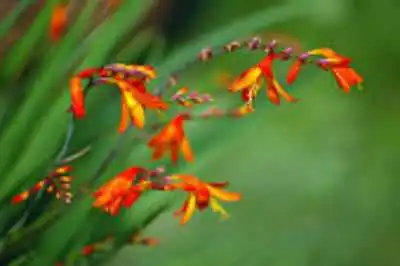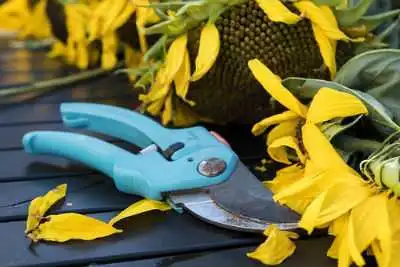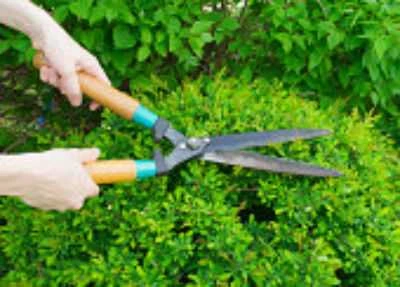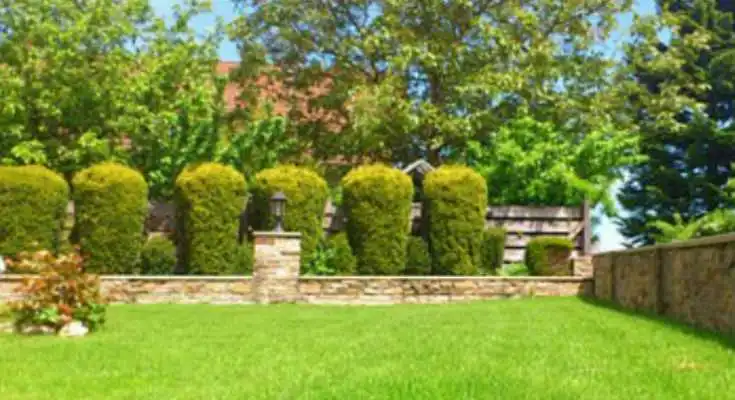Pruning is an important gardening step for many plants and trees. Proper pruning techniques can help maintain the size of ornamental trees and shrubbery, keep plants healthy and lush, and produce more fruit in the long run. But timing is also an important factor. Different plants require pruning at different times before or after their blossoming cycle and some plants do best when they are pruned in the fall.
Pruning Flowers
Bearded Iris The Bearded Iris displays tall foliage in the summer but can often succumb to fungal disease in the fall. After the first frost, cut back its foliage. Remember to never compost diseased plant parts.
Blackberry lily Pruning the Blackberry Lily’s blooms will prevent the crown from rotting due to the foliage collapsing after the first frost arrives.
Crocosmia

The Crocosmia’s blooms naturally fall away after blooming, but the foliage can be pruned during the fall or after the first frost to keep it healthy during its dormant winter phase.
Daylily Pruning Daylilies in the fall can stimulate their growth the following spring and prevent them from rotting due to excess moisture or foliage collapse.
Hardy Begonia These flowers will often turn black after the first frost from foliage collapse. Dead foliage at the base of the plant can cause crown rot. Prune them in the fall to keep them healthy.
Painted Daisy During damp, cool autumns and winter, the usually cheerful-looking Painted Daisies will often rot. Prune them early in the fall to prevent their foliage from rotting.
As with any plant life, flowers that are dead or showing signs of the disease need to be removed right away. No need to wait until a certain time of year to cut back or even pull up dead plants.
Pruning Trees
For trees, it is often better to wait until they have finished dropping all their leaves. Pruning in the late fall months of late October or November when the trees are leafless and dormant is typically a good time for cutting back some of those branches.
It is easier for trees to close wounds and essentially heal from their pruning cuts after they have experienced plenty of colder temperatures. Cutting back limbs on several large branches too early in the fall before the first frost can stimulate new growth, which can then be damaged during harsh winter weather.
Of course, the exception to these guidelines is the cutting or removing of any dead or diseased branches. Diseased parts of trees should always be removed right away and discarded. Remember to avoid composting any plant or tree parts that looked diseased. Just throw them in a brush pile away from the garden spot!
Pruning Tools
Before getting started on those trees and shrubs, it is important to have the correct tools on hand to do the job well.

The most common pruning tool for small to medium sized branches, vines, or twigs is pruning shears.
There are three common types of pruning shears: bypasse, anvil, and ratchet.
Bypasse shears could be compared to heavy-duty scissors. They work great on the growing stems of rose bushes and some smaller trees. Anvil pruners have a straight, singular blade that can split larger branches or stems. Ratchet pruners operate similarly to anvil pruners but can cut in stages. These shears may be a good option for easing the strain on the hands and wrists.
Loppers are another popular type of pruning tool. They work well on branches no thicker than 2 ½ inches. Consider loppers for pruning fruit and nut trees, as well as vines.
Hedge shears are designed to be sued for landscaping shrubbery. Hedges, shrubs, or deadheading perennials usually have branches and twigs appropriately sized for hedge shears.
Pruning saws work best on those larger branches up to 5 inches in diameter. They are probably the best option for cutting back larger branches from trees. Be sure to consult the user’s manual to ensure the proper and safe use of pruning saws.
Of course, you can use a small electric chainsaw, especially if you have one already. A cheap and small homeowners’ chainsaw should do more than necessary.
To Prune, or Not to Prune?
While some flowers and trees should be pruned in the autumn or winter, cutting back some of them during their dormant season could be detrimental. Azaleas, crepe myrtles, and most fruit trees do not need to be pruned in the fall or winter, among others.

Be sure never to prune a tree or plant when it is wet. Cutting into a damp branch can spread harmful bacteria and disease.
Also, be sure to keep pruning shears and other gardening tools clean.
Using the same pruning shears on a healthy plant that were just used on a diseased plant can make more plants sick
Conclusion
Not all plants and trees need to be pruned, but it can help some of them maintain their shape and bear more fruit, while also cutting back on excess foliage that can block sunlight. When pruning, make sure it is the right time of year for the right plant, stay dry, and keep clean!
Happy clipping!

